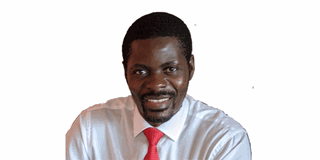Prime
Whose army is the Uganda People’s Defence Forces?

Author: Moses Khisa. PHOTO/FILE
What you need to know:
- As an arm for the state charged with national defence and security, the army is nearly indispensable in any society, and tends to have broad popular support as a body.
The Uganda People’s Defence Forces (UPDF) has been in the news this week. Last week, the Commander-in-Chief, the all-powerful Gen Yoweri T Museveni, also known as the ‘Ssabalwanyi’ (chief fighter) unveiled something peculiarly called the ‘Establishment’. In simple terms, it is a voluminous document or instrument outlining and detailing the structure, composition and modus operandi of the UPDF.
While officially presenting the document to the Chief of Defence Forces (CDF), Gen Wilson Mbasu Mbadi, Gen Museveni appeared to stir up quite a bit of disquiet by stating that with the ‘Establishment’, the CDF had taken command, control and administration of all elements of the UPDF. On Twitter, Gen David Sejusa, former Coordinator of Intelligence Services and retired from the army, rightly noted there was no big deal in the announcement, as indeed it is the CDF and not the Commander-in- Chief who manages the UPDF. In fact one would add that, in practical terms and on a daily basis, even the CDF does not command and control troops – rather, it is the commanders and different sector leaders who manage the armed forces.
That is why, often, we get junior officers overthrowing Generals through military coups precisely because these are the personnel directly in charge of troops. If they did not have command and control over troops, they would not succeed in deposing their ostensible bosses.
In a truly democratic setting, a Commander-in-Chief is largely ceremonial. He/she provides oversight and overall strategic leadership, but ultimately signs off what the Generals lay on the table, in turn, what the Generals present to the Commander- in-Chief comes from field commanders and operational leaders. But Uganda is not a democratically governed country, and the command structure of the armed forces is opaque and civilian oversight is nearly absent or largely inconsequential. In the main, the UPDF has for the most part been a highly personalised and tightly controlled armed force by the Commander-in-Chief and a few close acolytes.
This has invariably inhibited the transformation of the UPDF into a properly professional and institutionalised modern army. At root is the origin and evolution, from a guerrilla rebel group that relied nearly exclusively on the thinking and ingenuity of one man (and a few close followers and kin) to a state army under the very people who started it for the political cause of capturing state power.
Because the overarching goal was to fight to take over the state through the forces of arms, the same armed forces had to underwrite the continued hold on power in ways that patently offend the norms of a professional armed force.
The remit of a professional army is to superintend national defence and secure the country against external enemies, and to counter any internal activities that would undermine national security. In undertaking this mandate, an army must maintain a strict non-partisan orientation and have no partiality towards any particular political grouping or politician. On this account, the UPDF has woefully fallen short. As an arm for the state charged with national defence and security, the army is nearly indispensable in any society, and tends to have broad popular support as a body. Ideally, efforts to build and transform the UPDF as a national institution should appeal to majority Ugandans. In practice though, it is now a hard sale given the politics of the day.
At any rate, we may very well interpret Mr Museveni’s launch of the ‘Establishment’ and his announcement that all elements of the UPDF were under the command and control of the CDF as signalling end of the status of a national army beholden to its founders.
In recent years, many Luweero ‘bush-war’ crop of commanders and senior officers have retired. What’s more, the UPDF has come a long way in shedding off bits of the guerrilla rebel hangover and legacies of its origins. The command structure is more diversified (at one point all full Generals were from one subethnic group), its physical infrastructure and human resources much improved, etc. All these could point in a progressive and promising direction, one would argue. But such an optimistic reading would be a somewhat naïve failure to grasp the political dynamics and power pursuits at play.
There is no question, some lower-level and senior officers in the UPDF are committed to the norms and ethos of a professional army, yet it is also true that others remain firmly committed to serving the power interests of the political status quo. With a Commander-in-Chief who appears trapped in power and heavily relies on the coercive arsenal of the state to beat back his political challengers, and all sorts of actors with vested interests to maintain the current state of affairs, it is difficult to see how the UPDF cannot continue being a tool of regime survival. In which case, the claim to a national army in the service of all Ugandans regardless of political affiliation and social background remains highly questionable.



